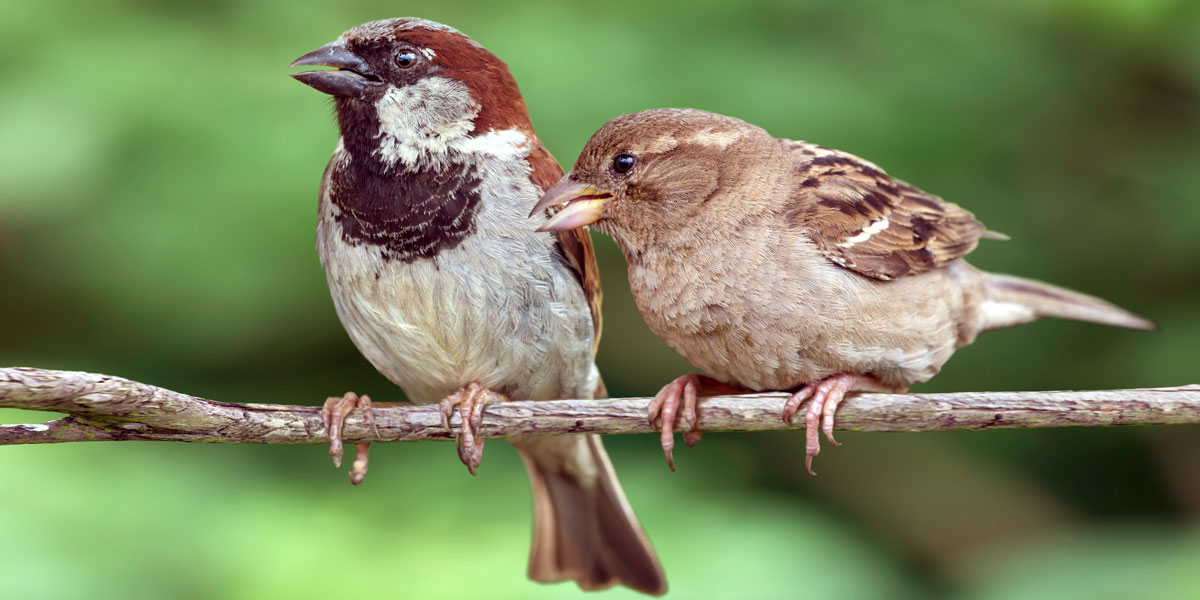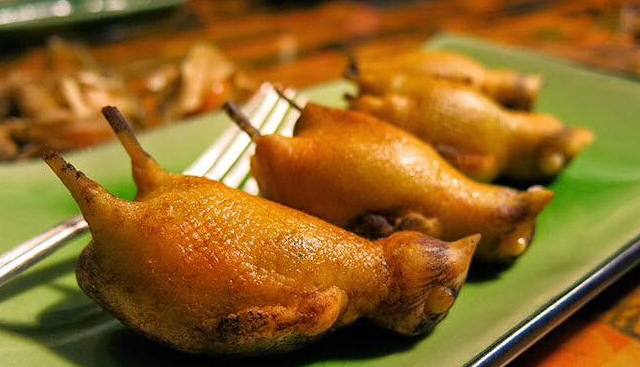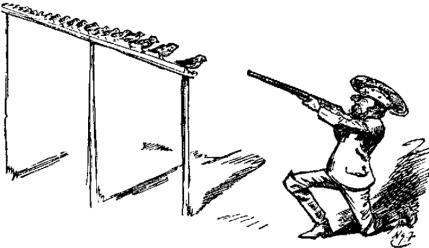

|
 “Industrious and intelligent boys who live in the country, are mostly well up in the cunning art of catching small birds … pluck them free from feathers, cut off their heads and claws, and pick out their gizzards from their sides with the point of a small knife, and then hand the birds over to your mother” fried in butter then encased in suet and boiled  Image: Paul Fleet Small birds are rarely eaten nowadays. If they are, they are commonly plucked, drawn and baked or fried whole, or slit and the breasts only removed for frying. But the preponderance and variety of receipts, common from the 14Cent until the mid 19Cent, tell us they were once, if not an everyday food, at least a very well-known delicacy. Our correspondent John Fisk (2022) recalls of life on the Suffolk coast that “my father had a dish made of sparrows caught by small boys. Rook Pie was a seasonal dish from early summer when young rooks were grown but not fledged so we’re taken from the nests by hand (like squabs) and the breasts soaked in milk overnight before being baked in a pie the following day.”  Original Receipt in ‘The Art of Cookery Made Easy and Refined‘ by John Mollard, 1802 (Mollard 1802) Original Receipt in ‘The Art of Cookery Made Easy and Refined‘ by John Mollard, 1802 (Mollard 1802)POTTED LARKS OR SMALL BIRDS. Pass them with the same ingredients as for veal; when they are half done take them out and put the lean veal in. When the forcemeat is made, put the birds into the pots with it, bake them, and proceed in the same manner as with potted veal.  Image: Unknown  Original Receipt in ‘English Housewifry‘ by Elizabeth Moxon, 1764 (Moxon 1764) Original Receipt in ‘English Housewifry‘ by Elizabeth Moxon, 1764 (Moxon 1764)18. LARKS done in JELLY. Boil a knuckle of veal in a gallon of water till it is reduced to three pints, (it must not be covered but done over a clear fire) scum it well and clarify it, then season the larks with pepper and salt, put them in a pot with butter, and send them to the oven; when baked take them out of the butter whilst hot, take the jelly and season it to your taste with pepper and salt; then put the jelly and larks into a pan together, and give them a scald over the fire; so lie them in pots and cover them well with jelly. When you use them, turn them out of the pots, and serve them up. The French tradition of eating ortolan buntings never reached England, and is now outlawed in France. The tiny birds were captured alive then drowned in Armagnac, roasted and eaten whole, bones and all, while the diner draped his head with a cloth, either to retain the glorious flavour, or to hide the disgusting spectacle from fellow diners. But that doesn’t mean England had go short…  Original Receipt in ‘English Housewifry‘ by Elizabeth Moxon, 1764 (Moxon 1764) Original Receipt in ‘English Housewifry‘ by Elizabeth Moxon, 1764 (Moxon 1764)Small Birds in savoury Jelly. PUT a good piece of butter into the bellies of eight small birds, with their heads and feet on, and sew up their vents. Put them in a jug, cover it close with a cloth, and set them in a kettle of boiling water, till they are enough. Drain them, and make your jelly as before, and put a little into a mould: when it is set, lay in three birds with their breasts down, and cover them with the jelly: when this is set, put in the other five, with their heads in the middle, and proceed in the same manner as before directed for chickens.  Original Receipt in ‘The Good Huswifes Handmaide for the Kitchin‘ 1594 by Thomas Dawson, (Huswife 1594) Original Receipt in ‘The Good Huswifes Handmaide for the Kitchin‘ 1594 by Thomas Dawson, (Huswife 1594)To stew birdes. 62 TAke small birds faire picked, drawne, the legs cut off, frye them in butter or suet wel. Then lay them in a faire cloth and let the Butter soak all away: then take Onions minsed small, cast them in a pot, and take a portion of Sauell, & of wine, draw them through a strainer, and cast it into the pot, with the Onions and birds fryed, with Cloues, Mace, and a litle Pepper, let all these boyle together till it be enough, and put to it sugar, powder of Ginger, salt and Saffron, and so serue it foorth. To stew Larks or Sparrowes. 63 TAke of your mutton broth the best, and put it in a pipkin, and put to it a litle whole Mace, whole pepper, Claret wine, marigolde leaues, Barberies, Rosewater, vergious, sugar, and Marrow, or else sweet butter: perboil the Larkes before, and then boyle them in the same broth, and lay them vpon sops. An other way to stew Larkes. 64 YOu must take them & draw them clean and cut of their feet, & then take a good deal of wine in a platter, and take a good deale of marrow, and put it in the wine, and set them on a Chafingdish, and let them stew there a good while: then take a quantity of small Raisins and wash them cleane, and put them into the broth, and take a litle Suger and Synamon, and a few crums of Manchet bread and put them into the Larkes, and let them stew altogether. Then take and cut half a dozen tostes, and lay them in a platter, then put them into a dish with broth and serue them out. In England the taking and sale of the following birds is allowed from September 1st – February 28th. Shoveler, Pochard, Coot, Tufted Duck, Mallard, Teal, Pintail, Golden Plover, Woodcock, Common Snipe, Wigeon. The taking of Jack Snipe and Curlew is prohibited at all times.  “What a lark!” From ‘Punch’, 1891 See: Small Fowl Fonnell Palpatoon Bird Pudding Lark Pie Rook Pie Small Fowl Pudding of Small Birds Fonnell Sparrow Dumpling Courageous Tart Crustards of Fleshe  |
|
MORE FROM Foods of England... Cookbooks ● Diary ● Index ● Magic Menu ● Random ● Really English? ● Timeline ● Donate ● Royalty ● English Service ● Food Map of England ● Lost Foods ● Accompaniments ● Biscuits ● Breads ● Cakes and Scones ● Cheeses ● Classic Meals ● Curry Dishes ● Dairy ● Drinks ● Egg Dishes ● Fish ● Fruit ● Fruits & Vegetables ● Game & Offal ● Meat & Meat Dishes ● Pastries and Pies ● Pot Meals ● Poultry ● Preserves & Jams ● Puddings & Sweets ● Sauces and Spicery ● Sausages ● Scones ● Soups ● Sweets and Toffee ● About ... ● Bookshop ● Email: [email protected] COPYRIGHT and ALL RIGHTS RESERVED: © Glyn Hughes 2022 BUILT WITH WHIMBERRY |